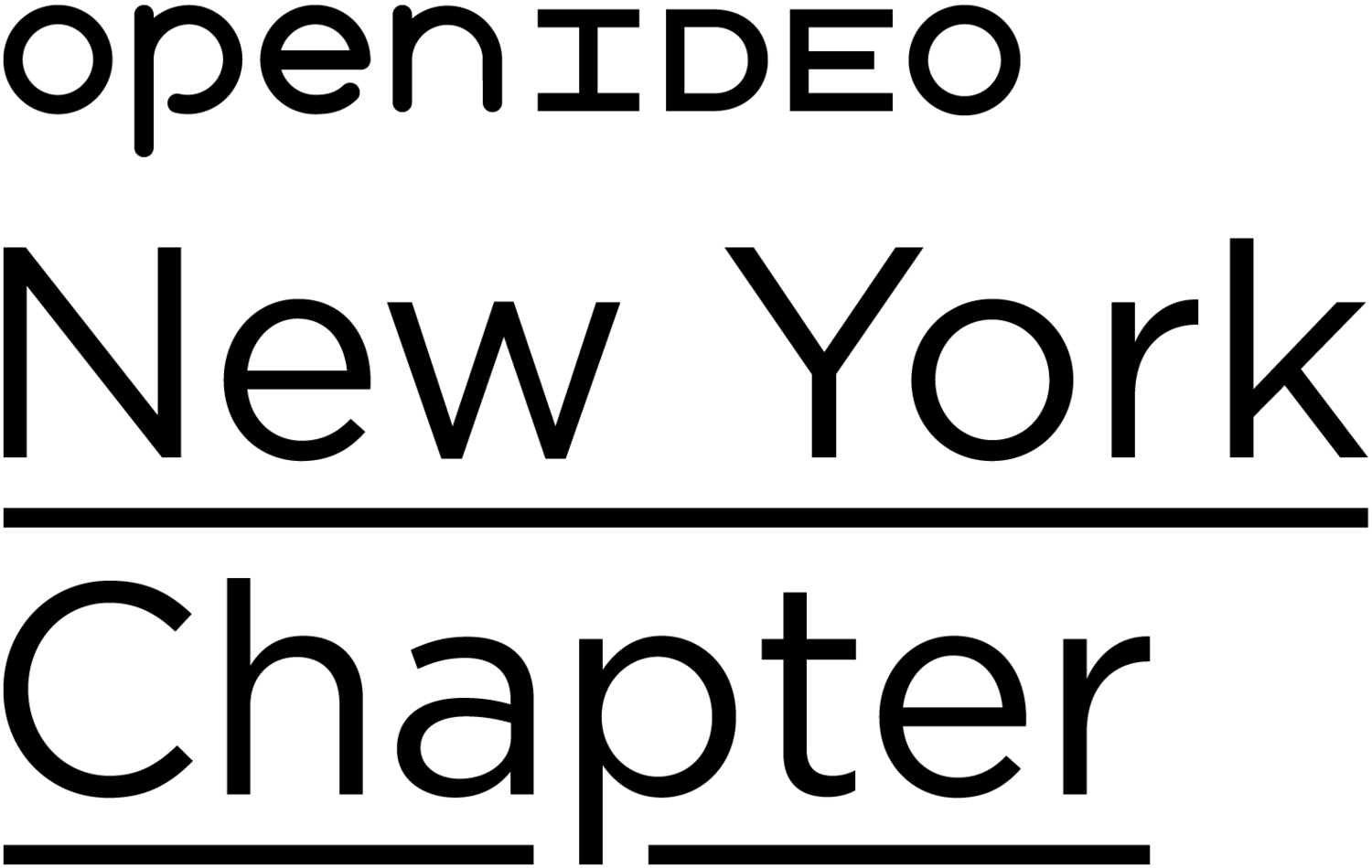By Alison Brown and Anne-Laure Fayard
About the writers: Alison and Anne-Laure are both OpenIDEO community members and two of four organizers for openIDEO NYC Chapter. In this write-up, they reflect on the experience of the OpenIDEO NYC Chapter participating in - along with students from both Design for America as New York University and Parsons School of Design Students - an Ideation Jam for the Center for Social Innovation
How we got the ball rolling...
For this chapter event we engaged in a partnership with a local organizationto tackle real-world problems and engage users. Anne-Laure had been talking with Allie Malher (designer at IDEO and teaching design thinking at Parsons this semester) for a little while about collaborating. They eventually decided to join forces to bring their students and the openIDEO NYC Chapter together to work on a design challenge.
Allie suggested to partner with the Center of Social Innovation in New York where she had worked. She knew they were facing a challenge in keeping their growing community (more than 700 members) connected and supporting better potential collaboration and access to the wealth of expertise all members collectively had.
Allie and Anne-Laure brought in 3 of their students, Leslie and Carlos from DFA NYU, and Nina from Parsons to join the Ideation Jam team to help them design and facilitate the workshop.
So three diverse groups (Design for America NYU, Parsons students and openIDEO NYC Chapter) all came together to collaborate, ideate, eat pizza and design solutions for our local partner - the Center for Social Innovation.
We think our local partner was pretty awesome…
The Centre for Social Innovation (CSI) is a coworking space, community and launchpad for people who are changing the world. On May 1, 2013 they officially opened our doors to support NYC’s dynamic ecosystem of change agents and quickly became one of the premier destinations in New York City for social entrepreneurs and non-profits to accelerate their missions.
As they quickly approach their 3-year anniversary, they now actively support a community of over 300 organizations (for-profit and non-profit) made up of over 700 individuals, each one representing a lifetime of experiences, connections, knowledge and “super-powers”.
One of the biggest challenges CSI has faced as the community has grown is how to reveal the depth and richness of these assets so that the potential for collaboration, learning and support is exponentially increased. According to CSI managing director, “It is clear that the physical space alone is not a scalable solution and needs to be supported by a technological one. And the existing technology solutions have not effectively solved the issue of unlocking the myriad of assets that often exist within a closed community. “
Each group had one or two CSI Members and participants interviewed them during the research phase. This allowed participants to learn first-hand from their experiences.
CSI posed a design challenge…
CSI wanted to know: How might we design a tool that better connects and reveals the assets within the CSI community? CSI sought an easy to use, clear, aesthetically pleasing, effective and sticky tool that helps reveal the depth of assets that exist within a closed community (ex. A coworking space, office building, company, alumni association, etc.), to increase the likelihood of collaboration, learning and support.
And then we flexed our creative and collaborative muscles along with a LOT of sticky-notes…
The event was split into two main phases: Research, with a focus on honing interview skills and Ideation, with the use of the mash up technique and providing the opportunity to iterate and refine the idea
As we wanted to increase the likelihood of designing solutions that would be useful, we invited 15 CSI members to join. This provided us a great co-creation opportunity.
The Ideation Jam team also all did research to create an inspiration wall. This provided context and sources for inspiration to participants. This was key as they had only 3 hours to understand the design challenge and come up with creative solutions
Each team reported back to the group as a whole - here an app designed for members to get to know their office neighbors.





